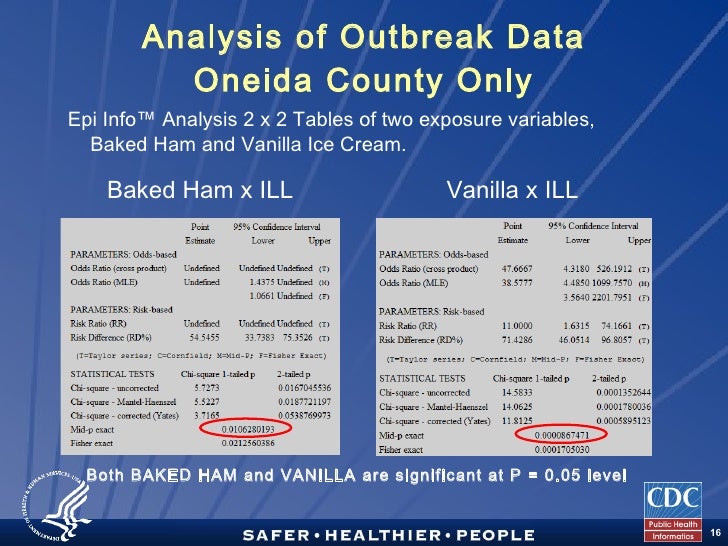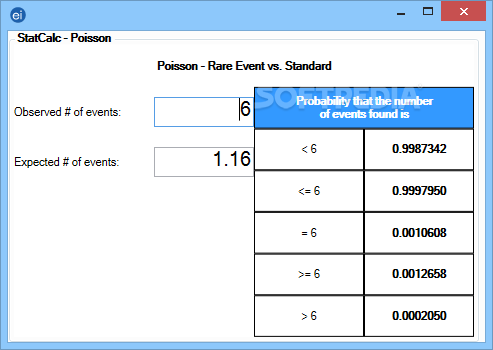
The completeness of data was checked by interviewers and supervisors during the process. The questionnaire was pre-tested with 5% of the total sample size at the Rift Valley University before the actual data collection to check for the accuracy of responses, language clarity, and appropriateness of the tools. Supervision was also done on the spot by the principal investigator.
EPI INFO STATCALC FREE DOWNLOAD HOW TO
One day training was given on how to approach study participants and how to implement the questionnaire. To check the quality of the data, the data collectors and supervisors were trained. Height was measured using a stadiometer at standing upright with the head in the Frankfort plane and recorded with an approximation of 1 cm. Weight was measured using a floor weighing scale (Electrolux, Japan) with participants standing without shoes and wearing light clothing and recorded to the nearest 0.5 Kg. Data was collected by face to face interview by five trained Bsc physiotherapists. The questionnaires were translated to Tigrigna and again back to English to confirm consistency.

Citation17 This tool includes the following four sections sociodemographic characteristics, psychosocial, and behavioral factors, and work-related/mechanical (working hours per day, working days per week/per month, additional tasks, ergonomic training, and MSDs). Therefore, the aim of this study was to determine the burden of musculoskeletal disorders and its associated factors among the cleaners working at Mekelle University.ĭata Collection Procedures and Data Quality Control IssuesĪ standardized Nordic Musculoskeletal Questionnaire tool was used to collect the data. Given these drawbacks, identifying the magnitude and risk factors of musculoskeletal disorders among cleaners might help to develop preventive health strategies and policy, interventional guidelines. Citation15 In Sub-Saharan countries, particularly in Ethiopia, the prevalence of musculoskeletal disorders and its associated factors among cleaners is not well known. However, cleaners in different parts of the world may suffer from different levels of MSDs due to the diverse working environments. Musculoskeletal health problems among cleaners have already been investigated worldwide. Citation5, Citation13 Most specifically, repeated repetition, uncomfortable postures, and heavy lifting are biomechanical risk factors for MSDs. This includes high workload, conducting the same task frequently, the speed and intensity of work, lack of involvement and participation in the design of work arrangements, low appreciation, and weak organizational strategies (eg, risk assessment, reporting systems, training).
EPI INFO STATCALC FREE DOWNLOAD MANUAL
Citation10 – Citation12 In addition to this, cleaners face a variety of risk factors related to repeated manual handling and the completion of repetitive work. Often, cleaners participate in different physical activities that may change their normal body mechanics, which potentially leads them to develop musculoskeletal disorders over time. Citation8 The point prevalence rate of LBP among cleaners in Nigeria was 77.2%.


Citation4 The prevalence of MSDs was 74% in the UK, Citation5 90% in Taiwan, Citation4 1-year prevalence was more than 70%, Citation6 4-weeks prevalence at works was 84%, Citation7 and hospital cleaners in Norway was 56%. Citation3 MSDs are the second most common cause of disability in the world, with a double burden of economic costs and healthcare needs of individuals and a major social problem due to the associated disability. Occupational injuries are the most common health problems among cleaners worldwide. MSDs include sprains, strains, tears, soreness, pain, carpal tunnel syndrome, hernias, and connective tissue injuries. Musculoskeletal disorders (MSDs) are injuries or dysfunctions affecting muscles, bones, nerves, tendons, ligaments, joints, cartilage, and spinal discs.


 0 kommentar(er)
0 kommentar(er)
